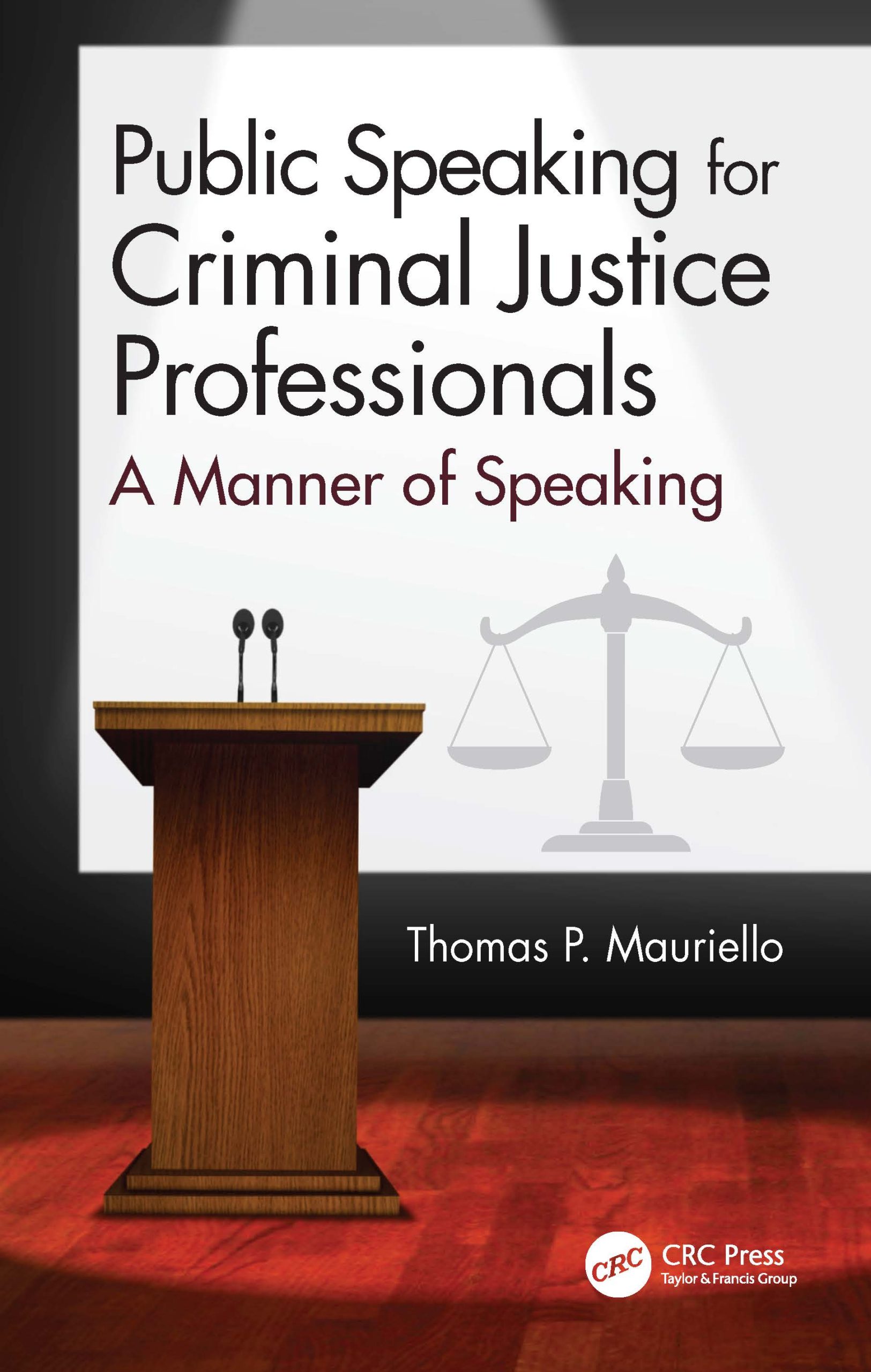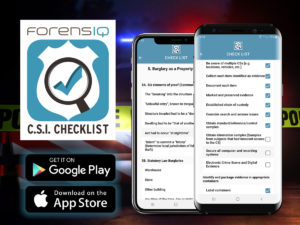Fragrances Scent Profiles Used to Categorize Suspects
Forensics experts are building chemical profiles of popular fragrances to help them identify scents left on clothing and items touched by offenders. These traces are coming from deodorant, perfume and soap left behind at crime scenes. By building up a ‘scent profile’ it can help to narrow down lists of suspects and even be used as evidence in court. They hope that by identify key compounds from the sweat left behind by criminals, it can be used as evidence against them. For additional information and to learn more please go to the link below:
http://www.forensicmag.com/news/2014/11/scent-profiles-used-categorize-suspects
[Abstract written by Mercedes Quick, ForensIQ Intern, 11/29/14]
Forensic Sstudents intern with FBI
Two forensic science students at Cedarville University, are doing an internship with the Federal Bureau of Investigation (FBI). They were chosen from a national pool of applicants for the FBI’s Honors Internship Program. Banks and Chavez used the past summer to begin learning from practical experience with the FBI agency. Last upon completion of their summer internships they were offered an extension through the school year at the Dayton office. For additional details on this article, please go to the website below”
http://xeniagazette.com/news/news_education/150311436/Forensic-science-students-intern-with-FBI
[Abstract written by Mercedes Quick, ForensIQ Intern, 11/30/14]
Va Budget Cuts Hit Forensic Lab Analysis of Trace Evidence
Virginia Department of Forensic Science is budget cutting to and reducing analysis of gunshot residue and several other kinds of trace evidence. For the full article go to the website below:
http://www.forensicmag.com/news/2014/12/va-budget-cuts-hit-forensic-lab-analysis-trace-evidence
[Abstract written by Mercedes Quick, ForensIQ Intern, 12/01/14]
New Way to Analyze DNA Evidence Under Development
The chair of the Department of Computer Science and an associate professor Desmond Lun, at Rutgers–Camden, is part of a collaborative research team that has been awarded a $1.7 million Army Research Office grant to create a software program based on a computational method for analyzing DNA evidence. DNA can be found in human cells from blood, hair, and skin. When a forensic analyst takes a DNA sample from an object, the DNA from everyone who had contact with the object is potentially in the sample. Lun is working with researchers from Boston University and the Massachusetts Institute of Technology. For additional information and the full article, go to the website below:
http://www.forensicmag.com/news/2014/12/new-way-analyze-dna-evidence-under-development
[Abstract written by Mercedes Quick, ForensIQ Intern, 12/01/14]
Enhance Your Skills with Sirchie Training in 2015 Plus New Free Training Webinar Next Week
Sirchie Laboratories has announced that the 2015 website & access to their Training Section where you can sign up for each class or contact them for more details: full schedule starting in January.
Visit their website at www.sirchie.com
- In the United States, via email sales@sirchie.com or phone (800) 356-7311, (919) 554-2244
- Outside the US, email international@sirchie.com or phone +1.919.554.2244
Download the brochure and visit their webpages via the links and images below to learn more about the classes and register before the sessions sell out.
[Abstract written by Mercedes Quick, ForensIQ Intern, 11/13/14]
Fingerprinting in Adverse Conditions
When it comes to getting fingerprints from a crime scene they are not always in the pristine weather, weather is often a problem. In this article, they look at fingerprinting essentials in extreme conditions such as extreme heat, extreme cold and wet conditions. In extreme heat it interferes with the lifting tape; in extreme cold when the temperature dips below freezing, you have to thaw prints before processing them; and in wet conditions you need the correct product and techniques to get the latent prints. For additional information and more details on fingerprints in adverse conditions please got to the website below:
[Abstract written by Mercedes Quick, ForensIQ Intern, 11/17/14]
Running the world’s only forensic animal crime lab
At the US Fish and Wildlife Service Forensics Laboratory, the lab supports a network of federal agents and inspectors who are trying to protect endangered species and take down wildlife traffickers. A seasoned CSI investigator named Ken Goddard, who left human police now works to create this special lab in Ashland, Oregon. Ken discusses the lab’s early beginnings, why he thinks rhinos are nearing extinction, and what it’s like wading through walrus guts in the Arctic. For more information on this article and get the interview with Ken Goddard please go to the website below.
[Abstract written by Mercedes Quick, ForensIQ Intern, 11/17/14]
Research Aims to Assist Forensic Investigations
A chemistry professor Barry K. Lavine at Ohio State University was awarded a grant to continue his research of automobile paint samples to benefit forensic scientists. The grant has the potential to speed up the paint sample process using infrared spectral data. The $443,000 grant from the National Institute of Justice is Lavine’s third grant in four years. Since 2010, his research has collected more than $1.2 million in funding. He plans to do this by comparing the spectral paint to the paint of the automobile using algorithms.
For additional information please visit the website below:
http://www.forensicmag.com/news/2014/11/research-aims-assist-forensic-investigations
[Abstract written by Mercedes Quick, ForensIQ Intern, 11/18/14]
3D Prints Takes Over Traditional Clay Modeling
Traditional Clay Modeling in Forensic Facial Reconstruction is being replaced by 3D Printings. The process consists of recreating the face of a person with only the skull as a reference. When making a clay model you had to be an artist schooled in anatomy, anthropology, and ontology. Even though clay models have been used for many years their is a major problem with the current practice of forensic facial reconstruction and it’s that the skull must be used and can, in the process, potentially be damaged. This machine is called Z Scanner where it makes a scan of the skull, then a Z650 3D printer is used to produce a lifesize replica of the skull. For more information go to the link below.
[Abstract written by Mercedes Quick, ForensIQ Intern, 10/27/14]
Wallet-sized Labs the Next Big Thing for Toxicology
Royal Melbourne Institute of Technology, (RMIT) researchers are developing an inexpensive, portable toxicology laboratory, that is so small you could fit it in your wallet. This new microfluidic chip will be used for toxicology and drug discovery testing. For more information on how they plan to use this new chip please go to the website below.
http://www.forensicmag.com/news/2014/10/wallet-sized-labs-next-big-thing-toxicology
[Abstract written by Mercedes Quick, ForensIQ Intern, 10/29/14]
Departments of Justice & Defense Grants to Improve Forensic Identification
The Department of Justice and the Department of Defense have awarded assistant professor Catherine Grgicak in biomedical forensic sciences at Boston University School of Medicine, approximately $2.5 million to more accurately analyze DNA evidence at a crime scene. Grgicak and her collaborators are producing and testing methods that provide match statistics for DNA comparisons as well as determining the probability that a certain number of contributors give rise to biological evidence. For additional information, please go to the link below.
http://www.forensicmag.com/news/2014/10/doj-and-defense-grants-improve-forensic-identification
[Abstract written by Mercedes Quick, ForensIQ Intern, 10/29/14]
Human Skulls Found at Connecticut Transfer Station
The skulls of an older man and woman were found at a Connecticut waste transfer station. The skulls and the mandible were sent to the medical examiner’s office in Farmington, Connecticut, where it was determined the larger one came from a man and the smaller skull and mandible came from a woman. There were no signs of trauma on either skull. The skulls are being sent to an anthropologist to get a more accurate estimate of the ages of the deceased, he said. For more information please go to the website below.
http://www.forensicmag.com/news/2014/10/human-skulls-found-connecticut-transfer-station
[Abstract written by Mercedes Quick, ForensIQ Intern, 11/02/14]
Forensic science solves mystery of Richard III’s death
Richard III was the last king of England to die in battle, over 500 years ago. He was discovered buried under a parking lot in Leicester, England, in September 2012. DNA tests confirmed its identity five months later. Today researchers use modern forensic science to figure out which injuries likely caused his death. They did this by using whole body CT scans and micro-CT imaging of injured bones to examine signs of trauma to the skeleton. For additional information, please go to website below.
http://www.cbsnews.com/news/forensic-analysis-of-richard-iii-death-solves-mystery/
[Abstract written by Mercedes Quick, ForensIQ Intern, 10/14/14]
Houston Forensic Science Center awarded $1.26 million grant
The Houston Forensic Science Center (HFSC) has been awarded a $1.26 million grant from the National Institute of Justice. The money will be used to train staff on the latest trends and technology in the field, and to buy additional DNA analyzing equipment. This equipment will enhance the Center’s capabilities, allowing it to process evidence more quickly and efficiently.
For additional information, please go to website below.
[Abstract written by Mercedes Quick, ForensIQ Intern, 10/14/14]
Body parts forgotten in crime lab over 7 years
A bag of human remains were discovered in a refrigerator at the Delaware Office of the Chief Medical Examiner. “All we know about the remains is that they were found in a wooded area in Kent County and have been in the refrigerator since 2006.” This shows us how uncontrolled and lax procedures are at the OCME’s Controlled Substances Laboratory. A judge is considering filing a motion that could potentially effect well over 200 pending drug cases. These cases could be thrown out and many more closed drug prosecutions could result in being overturned due to the lack of following procedures at the state’s only drug testing lab.
http://www.delawareonline.com/story/news/local/2014/09/21/body-parts-ocme-went-unnoticed-six-years/16020999/
[Abstract written by Mercedes Quick, ForensIQ Intern, 9/23/14]






